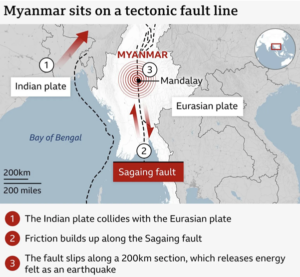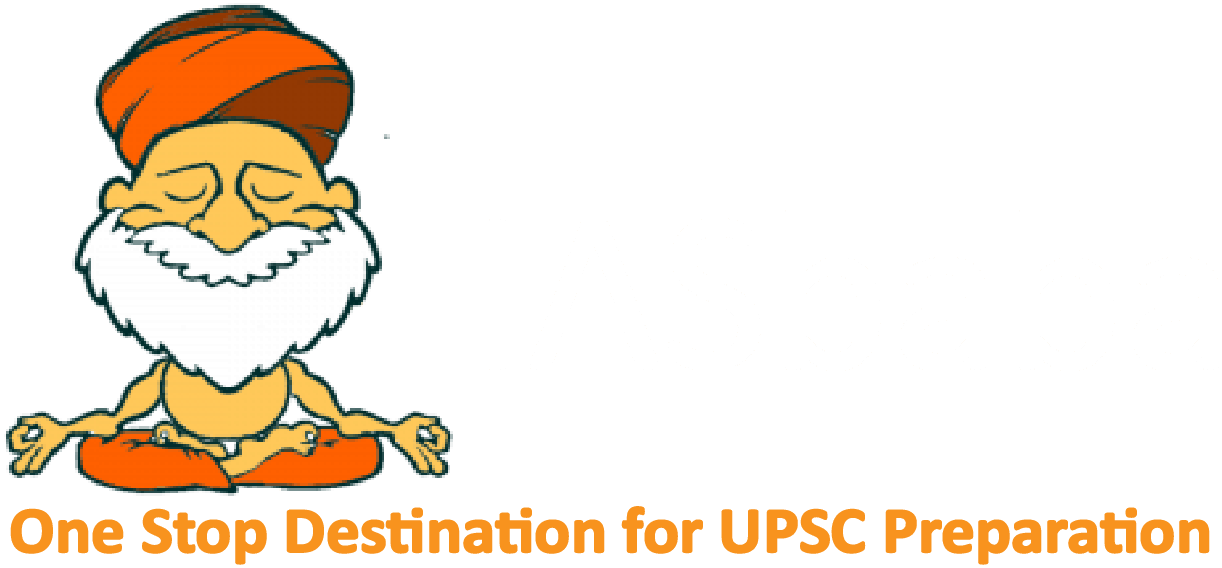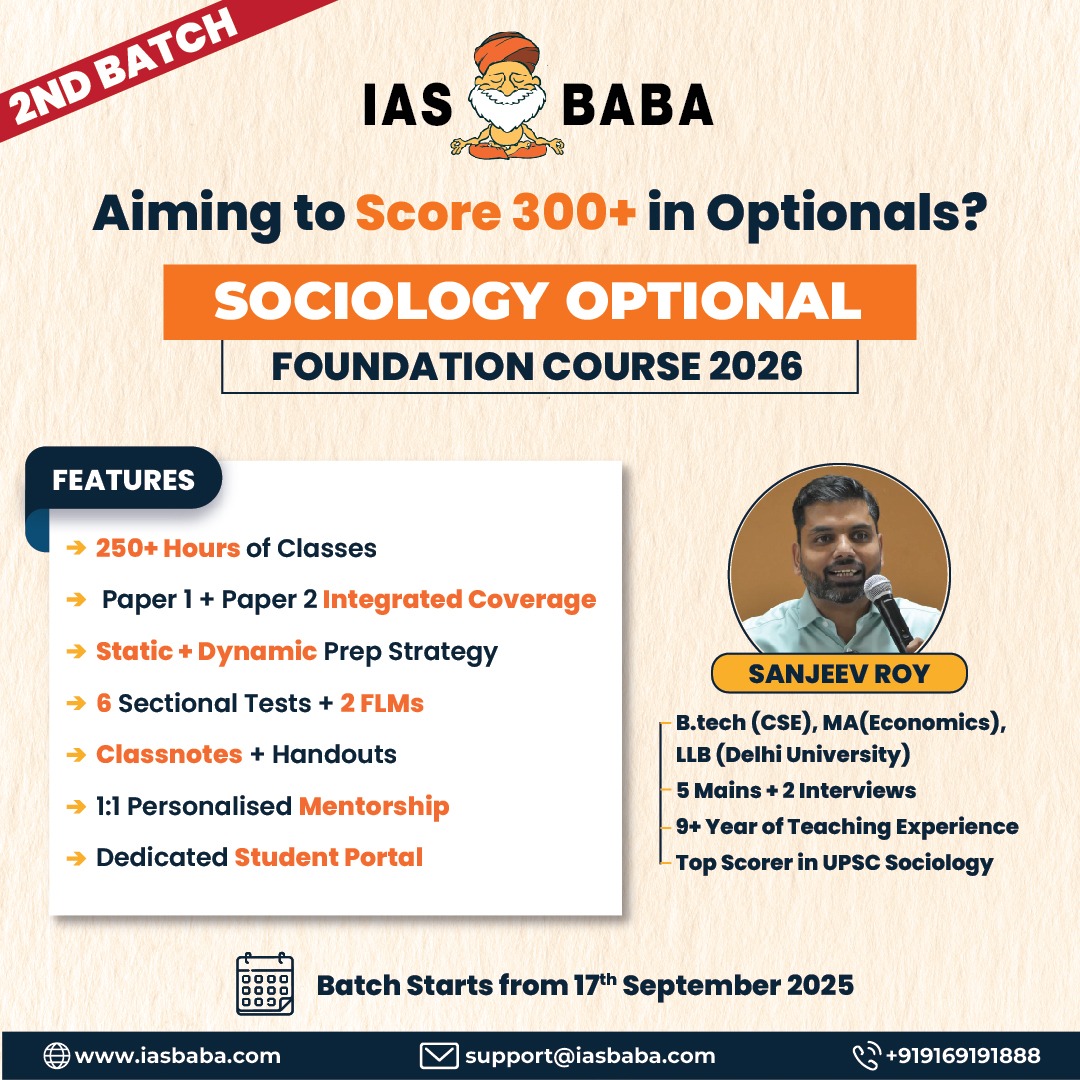IASbaba's Daily Current Affairs Analysis
Archives
(PRELIMS & MAINS Focus)
Syllabus: SCIENCE & TECHNOLOGY
Context: The Centre informed the Karnataka High Court that Elon Musk-owned X’s description of the government’s Sahyog portal as a “censorship portal” is “unfortunate” and “condemnable”.
Decoding the context: The HC is currently hearing a challenge by X against the government’s use of Section 79(3)(b) of the Information Technology Act, 2000 (IT Act) to moderate and order the removal of content on social media.
Learning Corner:
- The Sahyog Portal is an initiative by India’s Ministry of Home Affairs (MHA), developed under the Indian Cyber Crime Coordination Centre (I4C) to streamline the process of issuing notices to intermediaries for the removal or disabling of access to unlawful online content.
- Launched in 2024, the portal aims to create a safer cyberspace by automating and expediting content takedown requests under Clause (b) of Sub-section (3) of Section 79 of the Information Technology (IT) Act, 2000.
- Section 79 protects platforms (like x or instagram) from liability for the content that a third party (users) posts on their service. Part (3)(b) of Section 79 states that platforms can lose this protection if they fail to remove unlawful content after the Government or its agencies notify it about said content.
Key Features of the Sahyog Portal:
- Centralized Platform: Brings together authorized government agencies and IT intermediaries, facilitating coordinated action against unlawful online information.
- Automated Notices: Enables authorized agencies to issue takedown notices directly to intermediaries, ensuring timely removal of content used to commit unlawful acts.
- Dashboard Monitoring: Provides stakeholders with a national dashboard to monitor the status of requests, including the number of notices issued, actions taken, and pending requests.
Operational Process:
- Issuance of Notices: Authorized agencies, including central ministries, state police, and law enforcement agencies, can flag objectionable content and raise requests for its removal through the portal.
- Intermediary Action: Upon receiving a notice, intermediaries are expected to act promptly to remove or disable access to the specified content. They can also seek additional information or provide reasons for non-compliance if applicable.
- Monitoring and Compliance: The portal allows for tracking the status of each request, ensuring transparency and accountability in the content removal process.
Controversies and Legal Challenges:
- The Sahyog Portal has faced criticism from some quarters, notably from X Corp (formerly Twitter), which referred to it as a “censorship portal.” X Corp challenged the government’s use of Section 79(3)(b) of the IT Act, arguing that it leads to a parallel and unlawful content censorship regime.
- The Indian government has defended the portal, stating that it provides a structured mechanism for coordination between intermediaries and law enforcement agencies to address unlawful online content.
Source : Indian Express
Syllabus: ART & CULTURE
Context: Adivasis in Jharkhand and the larger Chhotanagpur region will welcome the new year and the spring season with the Sarhul festival on Tuesday (1st April) .
Decoding the context: While the festival is widely known as Sarhul among the Nagpuri-speaking populations, different tribes have their own names and particular ways of celebrating it. For instance, the Santal community calls it Baha Parab, whereas among the Ho and Munda peoples it is often referred to as Baa Parab.
Learning Corner:
- The Sarhul Festival is a spring celebration observed predominantly by the tribal communities of Jharkhand and the broader Chhotanagpur region, which also extends to parts of Odisha, West Bengal, Chhattisgarh, and even regions beyond mainland India.
- Sarhul not only marks the onset of spring and the new year for these communities but also stands as a symbolic celebration of the union between the Sun and the Earth.
Historical and Cultural Significance
- Nature Worship and Renewal: Sarhul—literally means “worship of the Sal tree” in the Nagpuri language. The Sal tree (Shorea robusta) holds a sacred status among Adivasi communities because it is believed to be the abode of Sarna Maa, the village deity who safeguards natural and social harmony.
- New Year and Agricultural Cycle: Sarhul is closely linked to agricultural activities. The ceremonies serve as precursor to the ploughing of fields and the sowing of crops, marking the transition from the winter dormancy to the vibrant period of growth.
- The three day festival centers around sacred groves, known as Sarna Sthals, where key rituals are performed.
- Day 1: The village pahan (priest) who observes a rigorous fast, fetches water for the ceremonies, houses and Sarna Sthals are cleaned, and Sal flowers gathered for rituals.
- Day 2: The rituals include offering Sal flowers to the deity, sacrificing a rooster, and seeking prosperity, safety, and good harvest. Holy water is sprinkled across the village, with performances of traditional songs and dances such as Jadur, Gena and Por Jadur. Young men engage in ceremonial fishing and crab-catching for the feast.
- Day 3: A community feast is held with handia (rice beer) and local delicacies. The festival concludes with the pahan’s blessings and prayers for the community.
- During the 19th and early 20th centuries, when tribes such as the Munda, Oraon, and Santal were sent to faraway places as indentured labour, Sarhul traveled with them. Today, the festival is celebrated in locations ranging from the tea gardens of Assam to the Andaman and Nicobar Islands, Nepal, Bangladesh, and Bhutan.
Source : Indian Express
Syllabus: GEOGRAPHY
Context: A powerful earthquake of magnitude 7.7 and at least six aftershocks struck central Myanmar, bringing buildings down in the country’s second-largest city, Mandalay, and killing at least 1,600 people.
Decoding the context: Neighbouring Thailand was also affected. Parts of Northeast India also felt the shake, although no casualties or significant damage to property has been reported.
Learning Corner:

- Earth’s lithosphere consists of moving tectonic plates whose interactions shape the planet’s geology. Earthquakes occur when these plates suddenly slip, releasing stored elastic strain energy as seismic waves that shake the ground.
- Myanmar is positioned in a region where several tectonic plates meet. It lies at the confluence of the Indian Plate, Eurasian Plate, Sunda Plate, and the smaller Burma Microplate. This junction makes the region naturally predisposed to seismic activity.
- Myanmar earthquake took place due to the “strike slip faulting” between the Indian and Eurasian plates, meaning these two plates rubbed sideways against each other.
- The quake took place on the Sagaing Fault, which runs north to south through the centre of Myanmar. A fault is a fracture or zone of fractures between two blocks of rock, which allows the blocks to move relative to each other, sometimes leading to earthquakes.
- The Sagaing fault marks the tectonic plate boundary between the Indian plate to the west and the Eurasian plate to the east. The Indian plate is moving north along the fault compared to the Eurasian plate.
- The earthquake that struck Myanmar was characterized by a shallow hypocenter—approximately 10 kilometers below the surface.
- Shallow-focus earthquakes tend to be especially destructive because the seismic energy does not have far to travel before reaching the surface. This allows for a greater proportion of the energy to affect structures and the ground itself.
- In regions with soft or loosely consolidated sediments, such as parts of central Myanmar and even areas as distant as Bangkok, seismic waves can be amplified, resulting in stronger shaking and more severe damage than would occur in rockier settings.
Source : BBC
Learning Assessment:
Q1. Why are shallow-focus earthquakes generally more destructive than deep-focus earthquakes?
(a) They occur in densely populated regions.
(b) The seismic energy has less distance to travel before reaching the surface.
(c) They occur only in oceanic regions.
(d) Their magnitude is always higher than deep-focus earthquakes.
Solution (b)
Syllabus: SCIENCE & TECHNOLOGY
Context: The Ministry of Education has banned the use of asbestos in construction or refurbishment of Kendriya Vidyalayas (KVs) and Jawahar Navodaya Vidyalayas (JNVs), Minister of State for Education, Jayant Chaudhary said.
Decoding the context: International health agencies, including the World Health Organization (WHO) and the International Agency for Research on Cancer (IARC), have classified all main forms of asbestos as carcinogenic to humans.
Learning Corner:
- Asbestos is a group of naturally occurring silicate minerals characterized by their fibrous structure, remarkable durability, and resistance to heat and chemical damage.
Asbestos is not a single mineral but encompasses several distinct types, the most notable being:
- Chrysotile (White Asbestos): The most commonly used form, featuring long, curly fibers. Chrysotile is primarily found in serpentine rock and was favored for its flexibility and heat resistance.
- Crocidolite (Blue Asbestos): Composed of extremely thin, straight fibers, crocidolite is considered one of the most dangerous due to its potential for causing lung cancers.
- Amosite (Brown Asbestos): Known for its heat resistance, amosite fibers are straight and brittle, and they were commonly used in insulation products.
- Others (Anthophyllite, Actinolite, Tremolite): These forms occur naturally and have been found as contaminants in chrysotile deposits or used on a smaller scale in commercial applications.
Due to its unique physical properties, asbestos was widely used throughout the 20th century:
- Building Materials: Its fire-retardant and insulating properties made asbestos ideal for use in cement products, roofing shingles, floor and ceiling tiles, and insulation around pipes.
- Manufacturing and Automotive Industry: Asbestos found applications in products such as heat-resistant fabrics, automobile brakes, and friction materials in clutches and transmissions.
- Other Applications: The durability and chemical inertness of asbestos also led to its use in fireproof clothing, electrical insulation, and various industrial filters.
The very qualities that made asbestos valuable—its fibrous, durable nature—also render it dangerously carcinogenic when inhaled:
- Continuous inhalation of asbestos fibers can lead to conditions such as:
- Asbestosis: A chronic lung disease resulting from scarring of lung tissue.
- Lung Cancer: Particularly in individuals exposed at high levels, especially when combined with smoking.
- Mesothelioma: A rare and aggressive cancer of the lining of the lungs (pleura) or abdomen (peritoneum).
- Latency Period: Diseases related to asbestos exposure often appear decades after the initial exposure, complicating diagnosis and the ability to trace the source of exposure.
Source : Indian Express
Syllabus: INTERNATIONAL
Context: International observers have raised concerns about escalating tensions in the Arctic, warning that if left unchecked, they could eventually spark conflict in the region.
Decoding the context: Unlike the Antarctic, which is demilitarised and environmentally protected by a dedicated international treaty, the Arctic lacks similar legal safeguards and is primarily governed by the UN Convention on the Law of the Sea (UNCLOS). This allows nations to claim territories in the region and deploy military infrastructure.
Learning Corner:

- The Arctic Council is an intergovernmental forum established to promote cooperation, coordination, and interaction among the Arctic States, as well as with the indigenous peoples of the Arctic region, in the areas of sustainable development and environmental protection.
- The Arctic Council was established in 1996 with the signing of the Ottawa Declaration.
- Purpose:
- Promote cooperation among the Arctic States on environmental protection, sustainable development, and scientific research.
- Provide a platform for indigenous peoples of the Arctic to voice their concerns and contribute to policy discussions.
- Focus on climate change and its effects on the Arctic region, as it is warming at more than twice the global average.
- The Arctic Council includes eight member countries, all of which have territories in the Arctic region. They are: Canada, Denmark (including Greenland and the Faroe Islands), Finland, Iceland, Norway, Russia, Sweden, United States.
- The Arctic Council is a non-binding forum, meaning it does not have the power to enforce its decisions.
- It has become a crucial player in discussions on geopolitics, resource extraction, and security concerns in the Arctic, particularly in light of climate change and the potential opening up of new shipping routes.
- The Arctic Council also includes observer countries and non-governmental organizations (NGOs) that participate in meetings and contribute to research and policy discussions. Some of the observer countries include: China, Japan and India.
Source : The Hindu
Practice MCQs
Q1. Why are shallow-focus earthquakes generally more destructive than deep-focus earthquakes?
(a) They occur in densely populated regions.
(b) The seismic energy has less distance to travel before reaching the surface.
(c) They occur only in oceanic regions.
(d) Their magnitude is always higher than deep-focus earthquakes.
Q2. Which of the following statements regarding asbestos are correct?
- Asbestos is a naturally occurring silicate mineral composed of fibrous crystals.
- Chrysotile is a type of asbestos.
- Asbestos exposure is linked to diseases like asbestosis, lung cancer, and mesothelioma.
- India has completely banned the use of all forms of asbestos.
Select the correct answer using the code below:
(a) 1 and 3 only
(b) 1, 3, and 4 only
(c) 1, 2, and 3 only
(d) 2, 3, and 4 only
Q3. Which of the following countries are members of the Arctic Council?
- Canada
- Finland
- Brazil
- India
Select the correct answer using the code below:
(a) 1 and 2 only
(b) 1, 2, and 3 only
(c) 1, 2, and 4 only
(d) 1, 2, 3, and 4
Comment the answers to the above questions in the comment section below!!
ANSWERS FOR ’ Today’s – Daily Practice MCQs’ will be updated along with tomorrow’s Daily Current Affairs
ANSWERS FOR 29TH March – Daily Practice MCQs
Q.1) – c
Q.2) – c
Q.3) – c













